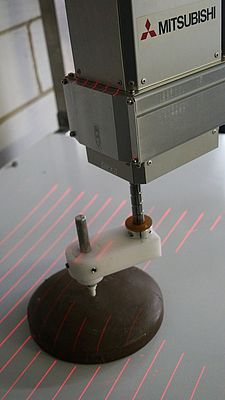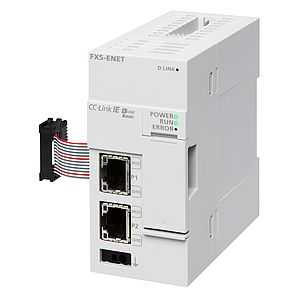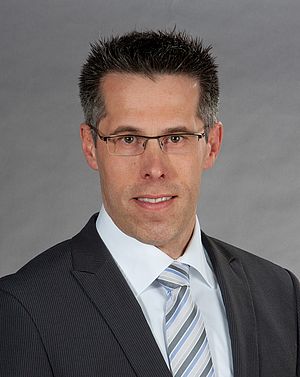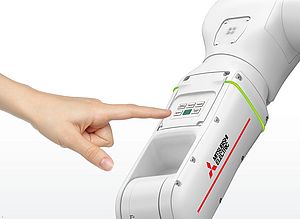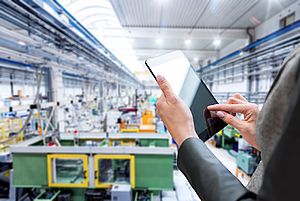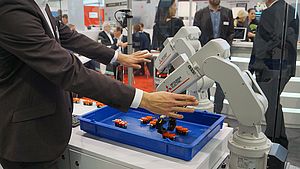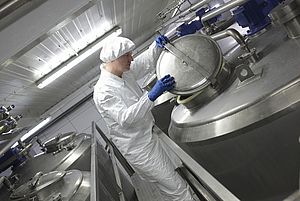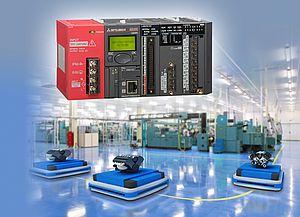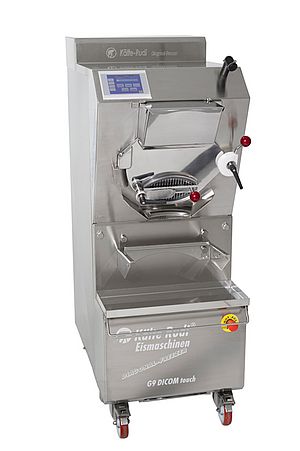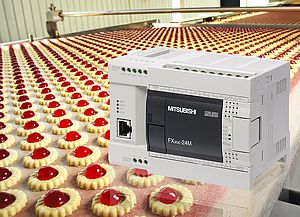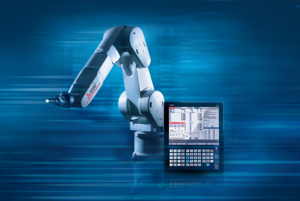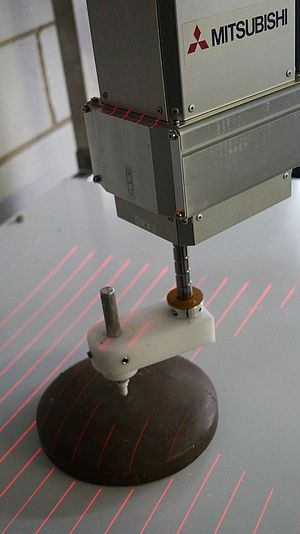Solving a long-standing automation problem in cake decoration has lead to a development that could be taken up across a whole range of other industries, replicating humans' intuitive hand-eye coordination and ability to automatically compensate.
Quasar Automation wanted to create a system that can neatly apply icing or other embellishments to cakes regardless of irregularities and imperfections in the cakes' surface. To achieve this they have integrated a ceiling-mounted food safe robot from Mitsubishi Electric with a vision system and data processing software from Scorpion Vision.
Bob Hinchcliffe, Managing Director of Quasar in Ripon, North Yorkshire, explains that the project fulfils an existing need: "Cake decoration is mainly undertaken manually and is very skilful. It can be time-consuming and the final result is, of course, variable."
The top of any cake is far from smooth; in fact each one is uniquely uneven. When applying writing, such as Happy Birthday, or an image, the decorator intuitively adjusts to allow for the irregularities. Early attempts at automated icing effectively used 2D images, which distorted on the rough surface and rarely looked perfect.
Hinchcliffe goes on to say that Quasar specialises in automation for the food industry and in recent years has developed a growing interest in the potential of robots for food applications. He was recently invited to Mitsubishi's UK headquarters where he was given a demonstration of a new robot range designed for the hygienic industries such as food manufacture.
The F-series robots are based on a revolutionary mechanical design and can be floor, wall or ceiling mounted. They incorporate a powerful new controller and other high performance components, so can maintain high positioning accuracy and high speed movements. All cabling is fully enclosed for total hygiene, including pneumatic tubing and an Ethernet connection for specialist functions.
Jeremy Shinton of Mitsubishi Electric comments: "Food and Beverage producers are increasingly looking at robotic automation. To meet this emerging need the F-Series robots are designed to meet IP67, allowing easy cleaning of the arm, while food safe HG1 food grade grease is used for lubrication. For the ultra-hygienic pharmaceutical and medical sectors a cleanroom version meeting ISO 5 is available."
Quasar decided to use the F-series robot, ceiling-mounted in a dedicated cell. Utilising the Ethernet cable, a machine vision camera is mounted on the robot and the first step of the operation is to scan the cake's surface so that a 3D mapped image of all the irregularities is produced.
The vision system was developed with Scorpion Vision, whose Window-based software can be combined with Gigabit Ethernet digital industrial cameras and bespoke lighting. The Windows format is familiar to almost everyone, so the system is far easier to use than those based on proprietary software.
With the 3D mapping compiled, the 2D image or decoration is compared to it and adjusted for any surface irregularities. Although this represents a substantial amount of data process, it typically takes only about one second. From this data, the tracking path for the robot to apply the icing is calculated.
Bob Hinchcliffe continues: "To ensure even application, the robot keeps the icing gun – or other tool – a precise height above the surface of the cake. It follows the major contours and also smaller local bumps, dips and discontinuities, so it is a very detailed profile of vertical movements." The automated system not only produces a consistent quality of product, it does it in a predictable time, so that production runs can be properly planned and scheduled.
While Quasar is largely focussed on applications in the food industry, Mitsubishi is taking a wider view, as Shinton explains. "What we have effectively done is replicate humans' intuitive hand-eye coordination and ability to automatically compensate for variations, defects and discontinuities in real-time. This technology will transfer to a great many other applications, such as 3D glue-laying, coating of unusually shaped objects, and accurate working with organic objects, In fact, it is really only manufactured objects that are of regular size and shape, nearly everything else has a variable topography. So this new system could be useful in automating a great many currently manual processes."



